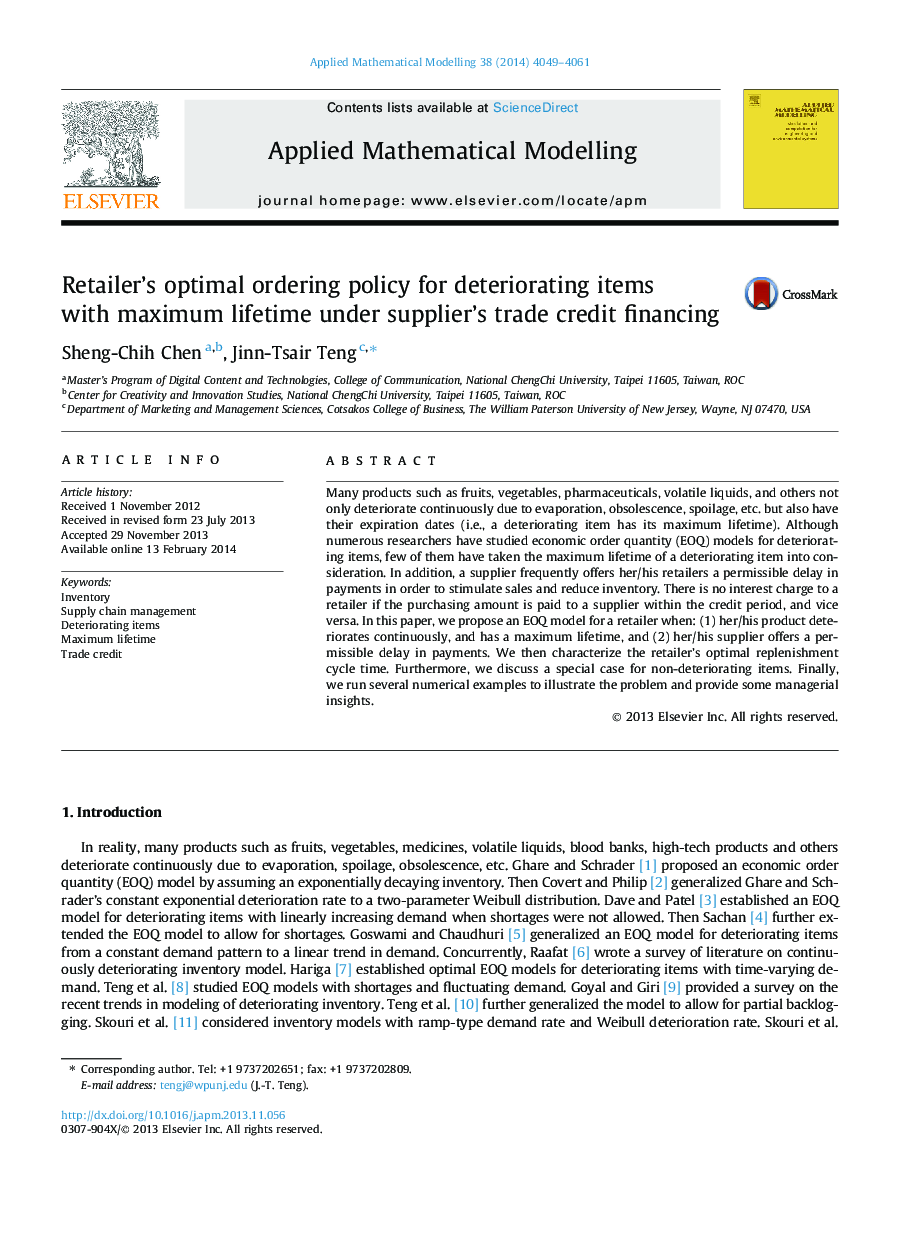| Article ID | Journal | Published Year | Pages | File Type |
|---|---|---|---|---|
| 1703803 | Applied Mathematical Modelling | 2014 | 13 Pages |
Many products such as fruits, vegetables, pharmaceuticals, volatile liquids, and others not only deteriorate continuously due to evaporation, obsolescence, spoilage, etc. but also have their expiration dates (i.e., a deteriorating item has its maximum lifetime). Although numerous researchers have studied economic order quantity (EOQ) models for deteriorating items, few of them have taken the maximum lifetime of a deteriorating item into consideration. In addition, a supplier frequently offers her/his retailers a permissible delay in payments in order to stimulate sales and reduce inventory. There is no interest charge to a retailer if the purchasing amount is paid to a supplier within the credit period, and vice versa. In this paper, we propose an EOQ model for a retailer when: (1) her/his product deteriorates continuously, and has a maximum lifetime, and (2) her/his supplier offers a permissible delay in payments. We then characterize the retailer’s optimal replenishment cycle time. Furthermore, we discuss a special case for non-deteriorating items. Finally, we run several numerical examples to illustrate the problem and provide some managerial insights.
Graphical abstractFigure optionsDownload full-size imageDownload as PowerPoint slide
